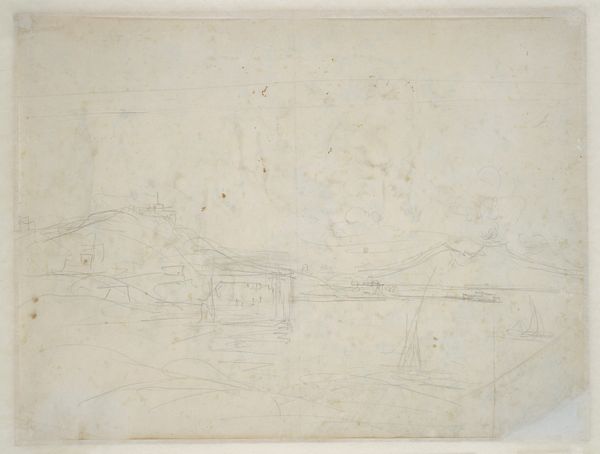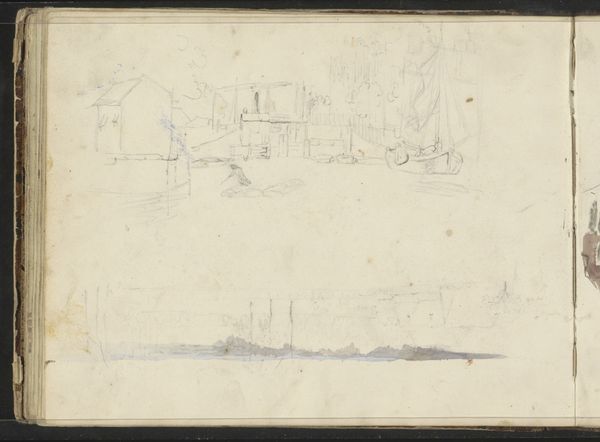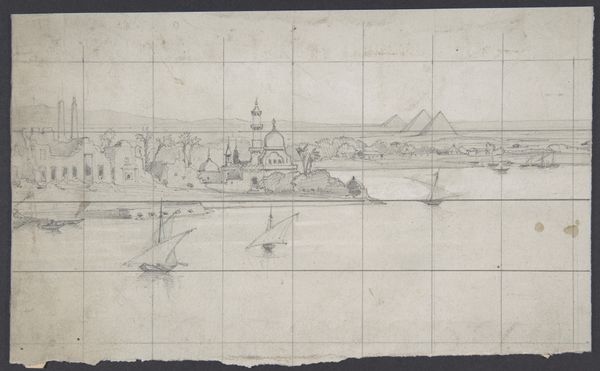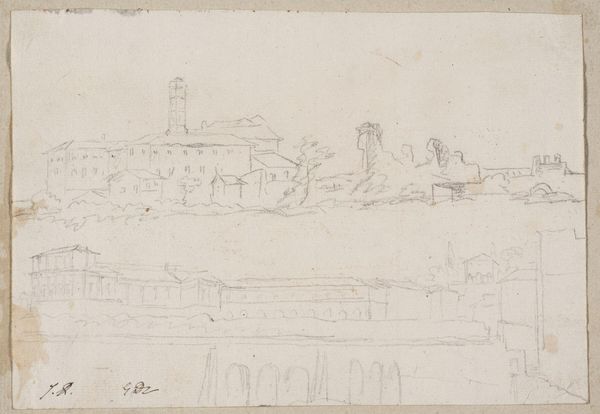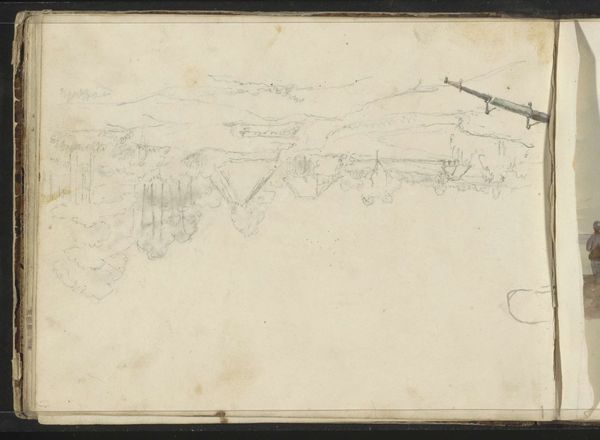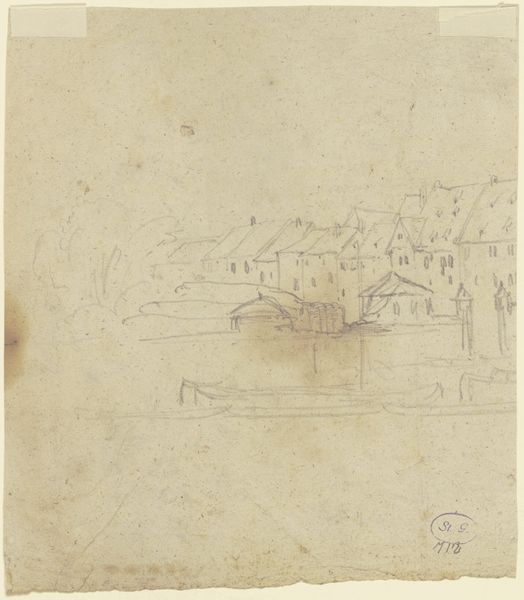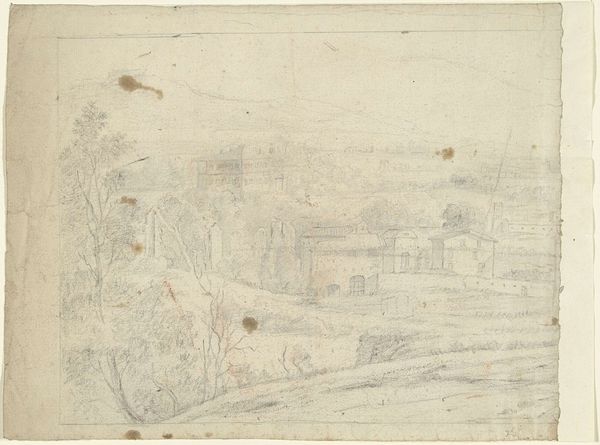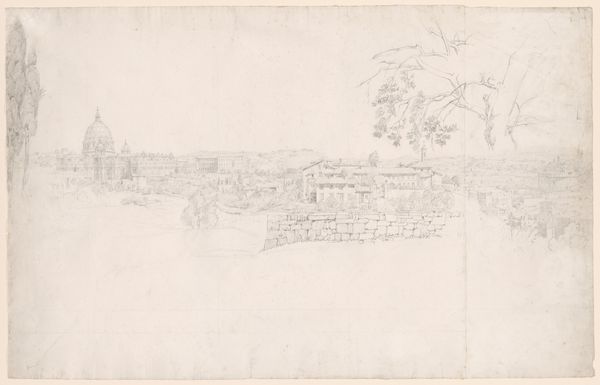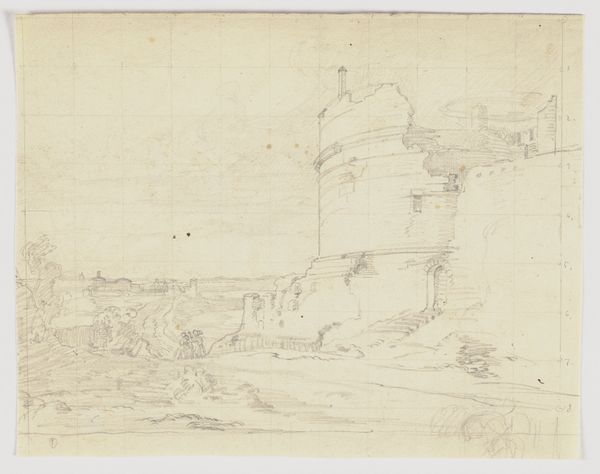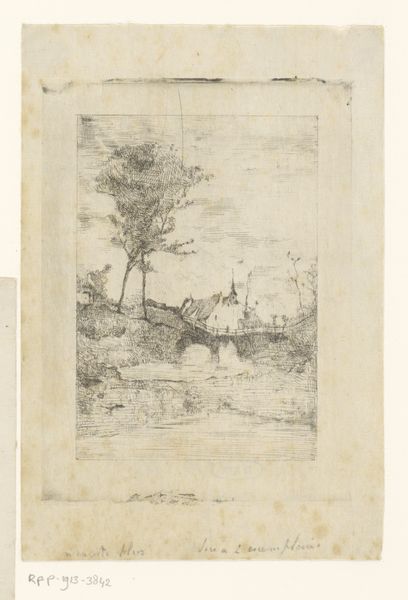
Design for a Stage Set at the Opéra, Paris 1830 - 1890
0:00
0:00
drawing, print, pencil
#
drawing
# print
#
landscape
#
pencil
#
cityscape
Dimensions: sheet: 10 3/16 in. (25.8 x 27.7 cm)
Copyright: Public Domain
Editor: This drawing, "Design for a Stage Set at the Opéra, Paris" by Eugène Cicéri, probably made somewhere between 1830 and 1890, it looks like pencil on paper. I'm really drawn to its ethereal quality, like a dream. What strikes you when you look at it? Curator: For me, the fascinating thing here is how this connects the *process* of theater design with broader social forces. Look at the labor involved - the pencil marks meticulously detailing the scene, the potential carpentry to construct such an elaborate backdrop. It begs the question, who are the hands that bring this design to life? Editor: That's interesting, I hadn't thought about the hands needed beyond the artist. Does the choice of using a drawing over, say, a painting, influence your perspective? Curator: Absolutely. A drawing is often a preliminary step, revealing the artist's working process. The materiality of the pencil – graphite mined and processed – links us to industrial and economic networks of the time. The consumption of theatrical spectacles relies on all that unseen labor and material extraction. Editor: So, it's about tracing the lifecycle of this design, from conception to consumption, and acknowledging the often-invisible contributions. Do you think knowing this was a stage design impacts how we should view the architectural and natural forms depicted? Curator: Precisely. This isn't simply a landscape, it’s a *manufactured* landscape, a consumable fantasy. Examining the materiality and production allows us to deconstruct the illusion of high art and acknowledge the labor and resources embedded within. Editor: That makes me think differently about what I'm seeing now. It is like the whole image, and therefore also the show, has many layers both visible and unseen. Curator: Yes, by shifting the focus to the production of art, rather than purely aesthetic contemplation, we see how deeply entwined art is with social and material conditions. A pencil and a stage design offer profound insights.
Comments
No comments
Be the first to comment and join the conversation on the ultimate creative platform.
